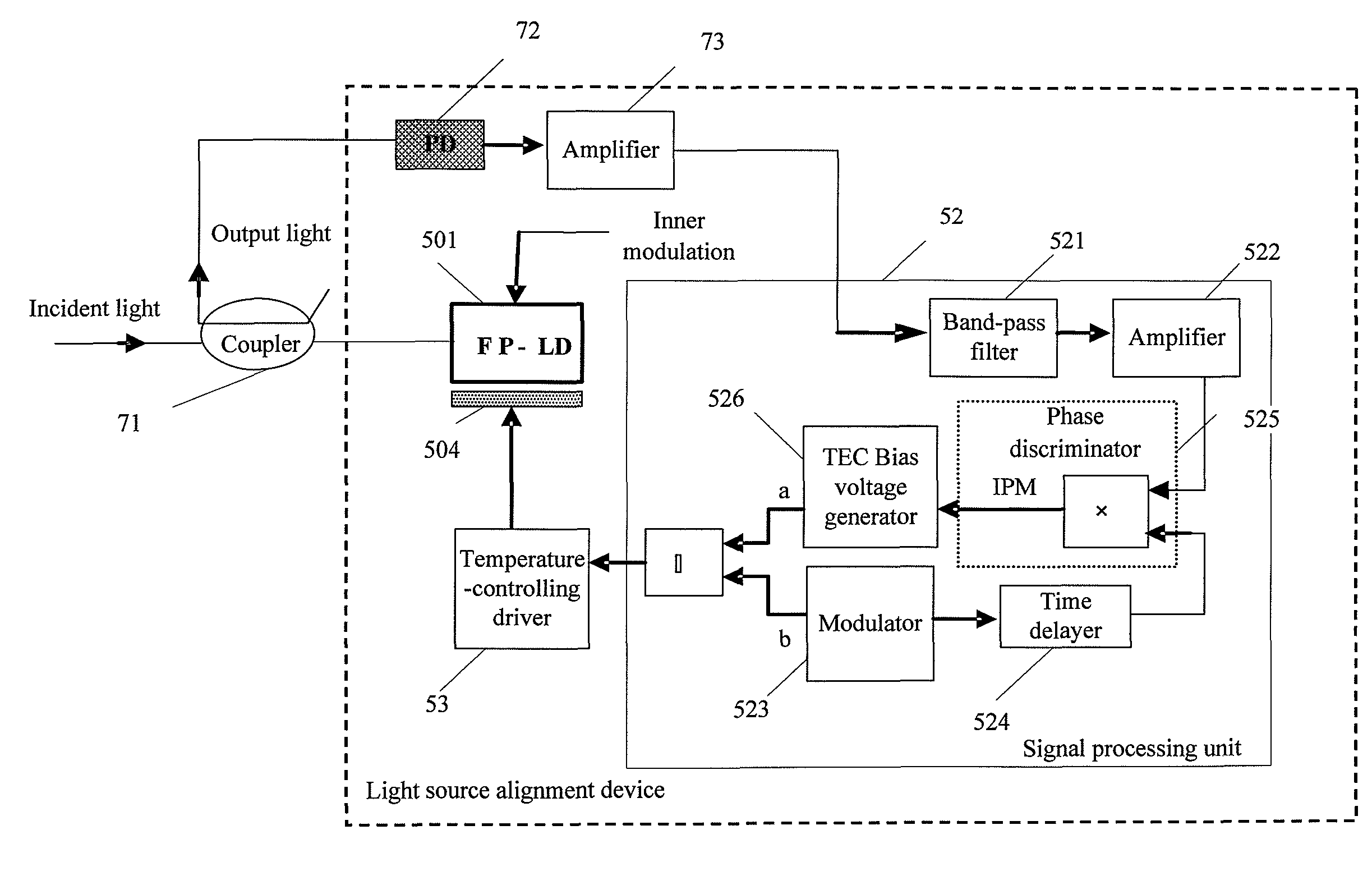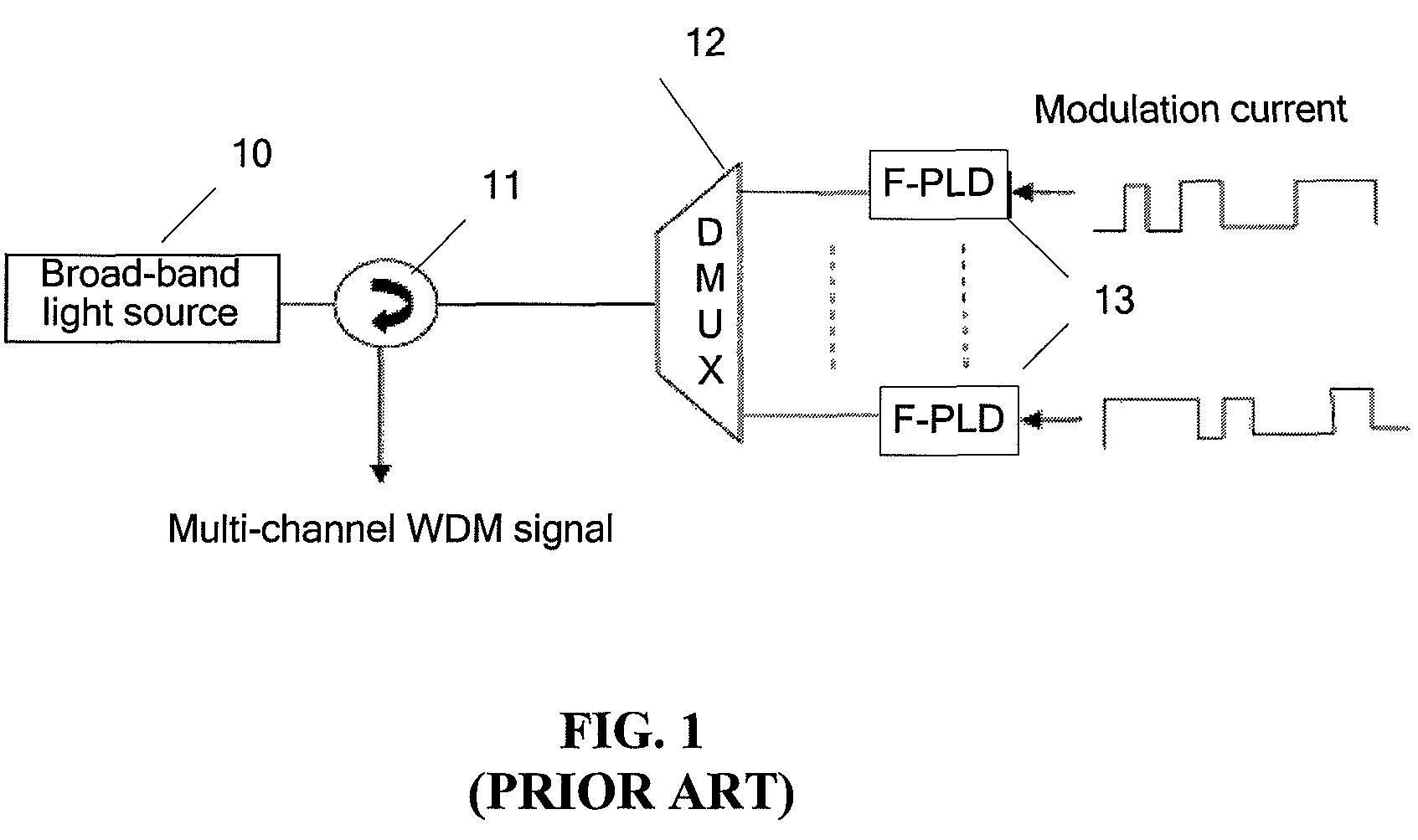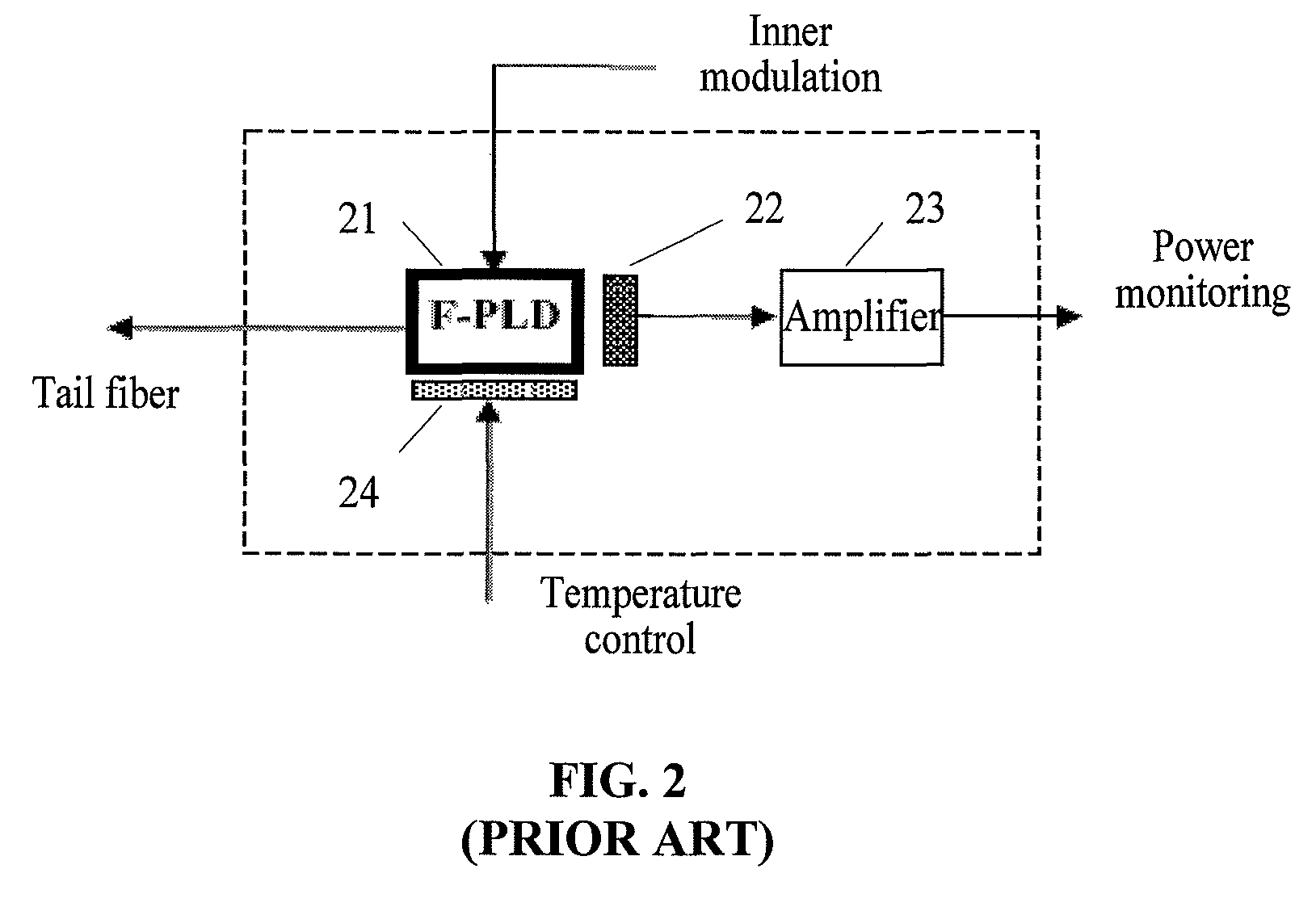Light source mode alignment device and method, passive optical network system
a light source mode and alignment method technology, applied in the field of optical communication, can solve the problems of not very mature wdm-pon, difficult to satisfy video services, and need to be improved, and achieve the effects of reliable operation of pon system, low cost, and strong anti-interference capability
- Summary
- Abstract
- Description
- Claims
- Application Information
AI Technical Summary
Benefits of technology
Problems solved by technology
Method used
Image
Examples
first embodiment
[0056]1) A An Analog Signal Processing Unit and an MPD Inside a Laser are Employed.
[0057]FIG. 5 is a structural view of a light source mode alignment device according to a first embodiment of the present disclosure.
[0058]An incident light enters an FP-LD 501 in a general laser module 50 via a circulator 51. The FP-LD 501 as an optical pump excites an FP-LD chip to generate a laser. One part of the laser (a large part of the energy) is emitted outwards via a front end surface of the FP-LD chip to form an output light, and the other part forms a back light of the laser via a rear end surface of the FP-LD chip. The back light is detected and converted into a current signal by an MPD 502. The current signal is amplified into a voltage signal by a transimpedance amplifier 503 located in the general laser module 50. Then, the voltage signal is transmitted to a signal processing unit 52. In this embodiment, the signal processing unit 52 is realized by an analog circuit, and the specific p...
second embodiment
[0064]2) A A Digital Signal Processing Unit and an MPD are Employed.
[0065]FIG. 6 is a structural view of a light source mode alignment device according to a second embodiment of the present disclosure.
[0066]This embodiment is basically the same as the first embodiment shown in FIG. 5, but the difference there-between merely lies in that, the signal processing unit is implemented by a digital circuit in this embodiment.
[0067]As shown in FIG. 6, a voltage signal output by a general laser module 50 for reflecting a backlight power is sent to an A / D module 61 for sampling to obtain a digitized power signal. Afterwards, the digitized power signal is sent to a signal processing unit 62 for a digital signal processing. The processing on the digitized power signal performed by the signal processing unit 62 is consistent with the analog processing shown in FIG. 5. The difference there-between lies in that, all processing in this embodiment is digitized processing, whereas the processing sho...
third embodiment
[0074]3) A An Analog Signal Processing Unit and a PD are Employed.
[0075]FIG. 7 is a structural view of a light source mode alignment device according to a third embodiment of the present disclosure.
[0076]Unlike the embodiment shown in FIG. 5, the incident light in this embodiment enters an FP-LD via a coupler 71 instead of a circulator. On one hand, the coupler 71 imports the incident light into the FP-LD in a proportion (for example, 50%), and on the other hand, the coupler 71 exports the output light of the FP-LD in a proportion for making a detection about an output optical power.
[0077]In this embodiment, a PD disposed at an exterior of the laser is employed. As shown in FIG. 7, the optical power of the light exported by the coupler 71 is detected by a PD 72. The PD 72 converts the optical power of the light exported by the coupler 71 into a current signal and sends the current signal to an amplifier 73 connected to the PD 72. A transimpedance amplifier inside the amplifier 73 a...
PUM
 Login to View More
Login to View More Abstract
Description
Claims
Application Information
 Login to View More
Login to View More - R&D
- Intellectual Property
- Life Sciences
- Materials
- Tech Scout
- Unparalleled Data Quality
- Higher Quality Content
- 60% Fewer Hallucinations
Browse by: Latest US Patents, China's latest patents, Technical Efficacy Thesaurus, Application Domain, Technology Topic, Popular Technical Reports.
© 2025 PatSnap. All rights reserved.Legal|Privacy policy|Modern Slavery Act Transparency Statement|Sitemap|About US| Contact US: help@patsnap.com



